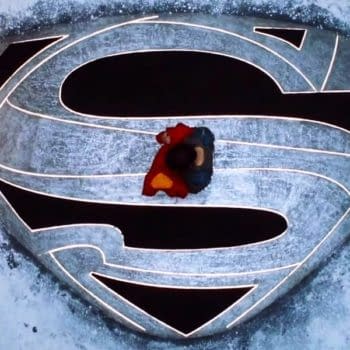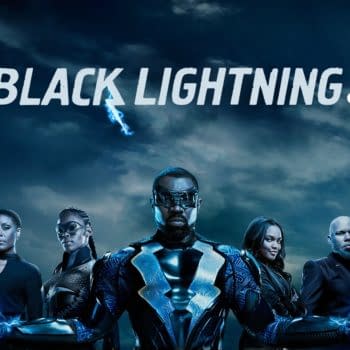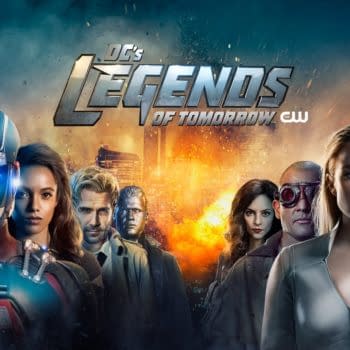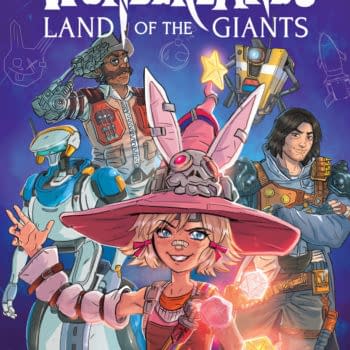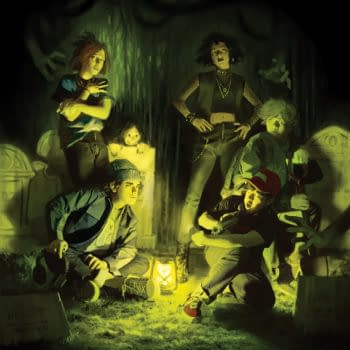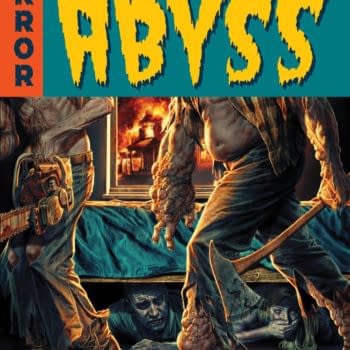Posted in: Comics | Tagged: Brandon Sanderson, Comics, dynamite, entertainment, HRL, Julius Gopez, Rik Hoskin, White Sand
Diving Into Brandon Sanderson's White Sand Vol. 2 With Co-Writer Rik Hoskin
Brandon Sanderson has created a series of impressive novels that make up what is called the Cosmere Universe. Last year he teamed with Dynamite Entertainment, writer Rik Hoskin and artist Julius Gopez to bring another part of the universe to life as a series of graphic novels called White Sand. The first volume did very well and the second one is due out this November. I had a chance to talk with Hoskin about the second volume and working with Sanderson on this original property.
DAN WICKLINE: How do you approach working on a project like White Sand as opposed to other comic series? Are you collaborating with Brandon Sanderson, or is this more of an adaptation type of process?
RIK HOSKIN: To answer that I'll need to give a brief history of the project. White Sand was an early manuscript by Brandon Sanderson — his earliest, in fact — which never got published because Brandon was never quite satisfied with it. With that in mind, Brandon wanted to use the graphic novel as an opportunity to finally "fix" the story — not that there was anything actually wrong with it. We spoke at length about what he wanted adjusted and where we'd deviate from the manuscript.
As such, the graphic novels are an adaptation of a moving target, with new twists and turns being layered in as I break down the original manuscript. Brandon and his team are deeply involved in those discussions and the approvals, but they're incredibly respectful of what I'm bringing to the whole process — so much so, they actually brought me in on another project a couple of years ago. For my part, I always try to stay as faithful as I can to the language Brandon uses, especially his dialogue, while making it flow for the comic book medium.
DW: How familiar were you with the Cosmere universe prior to taking on the assignment? Does this story tie into other aspects of Sanderson's novels, or is it somewhat standalone?
RH: I was aware of what Brandon was constructing with his books before I came on board. He's one of the new masters of the fantasy genre, doing amazingly ambitious things. The Cosmere is really a term for his particular universe, a little like Michael Moorcock's Multiverse.
Like any of the Cosmere books, the White Sand series can be read alone. However, it features some ties to Brandon's other series that astute readers will pick up on, such as the motivations behind the magic of this world, and also in a particular character, Khriss, who's been seen world-hopping in other books. On the timeline of the Cosmere, White Sand comes early on and marks Khriss's first appearance.
DW: The first volume of the series created the world, set up the abilities of the Sand Masters and introduced us to characters like Kenton and Khriss. Where does the second volume take us, and how long will this series of graphic novels be?
RH: The easy question first — White Sand will be three volumes, and I think the plan is to release them annually.
White Sand tells the story of the Sand Masters, magician warriors who use magically enhanced sand for their amazing feats. The first book was about their near-destruction, and how the fate of the few remaining Sand Masters fell on the shoulders of the inexperienced Kenton.
With volume two, things speed up as Kenton finds himself in the crosshairs of assassins while trying to negotiate politics with the truculent councilors who run the world of Dayside. It's faster moving and more action-driven this time around, with enemies appearing on all sides. Kenton needs to mature fast and part of that process sees him make a pact with Khriss, who's a superb negotiator and is drawn to sand mastery for her own reasons.
DW: You're working with Julius Gopez on the second volume, who did some gorgeous work on the first book. Do you write with his style in mind and for his strength, or do you not know for sure who the artist is when you start?
RH: When I started the first volume, we didn't know who the artist would be. Julius came as a pleasant surprise. His character work and sense of design is exceptional — he's being asked to envisage a whole new world with different flora, fauna, architecture, and so on, and he makes it look effortless. He must dream of other worlds, his work is amazing.
I write in full script, but I try to leave the artist as much space to breathe and interpret as I can. Having Julius back with us meant I knew the book would shine, he's unflappable.
DW: What do you think is the strength of this series? Why do you think readers should pick up both of the volumes? What makes this series unique upon the comic shelf?
RH: This is a fantasy book that's like no other. It's not derivative, we're not treading that "orcs, dwarfs and magical beasts" path, so it's like nothing you'll have read before. It's very character focused, involves a magic system full of quirks and limitations, and has back-stabbing politics driving the fast-moving action.
Captain of the White Sand Ship is Brandon Sanderson, who's become renowned for his carefully considered magical systems and sheer originality in the fantasy genre.





